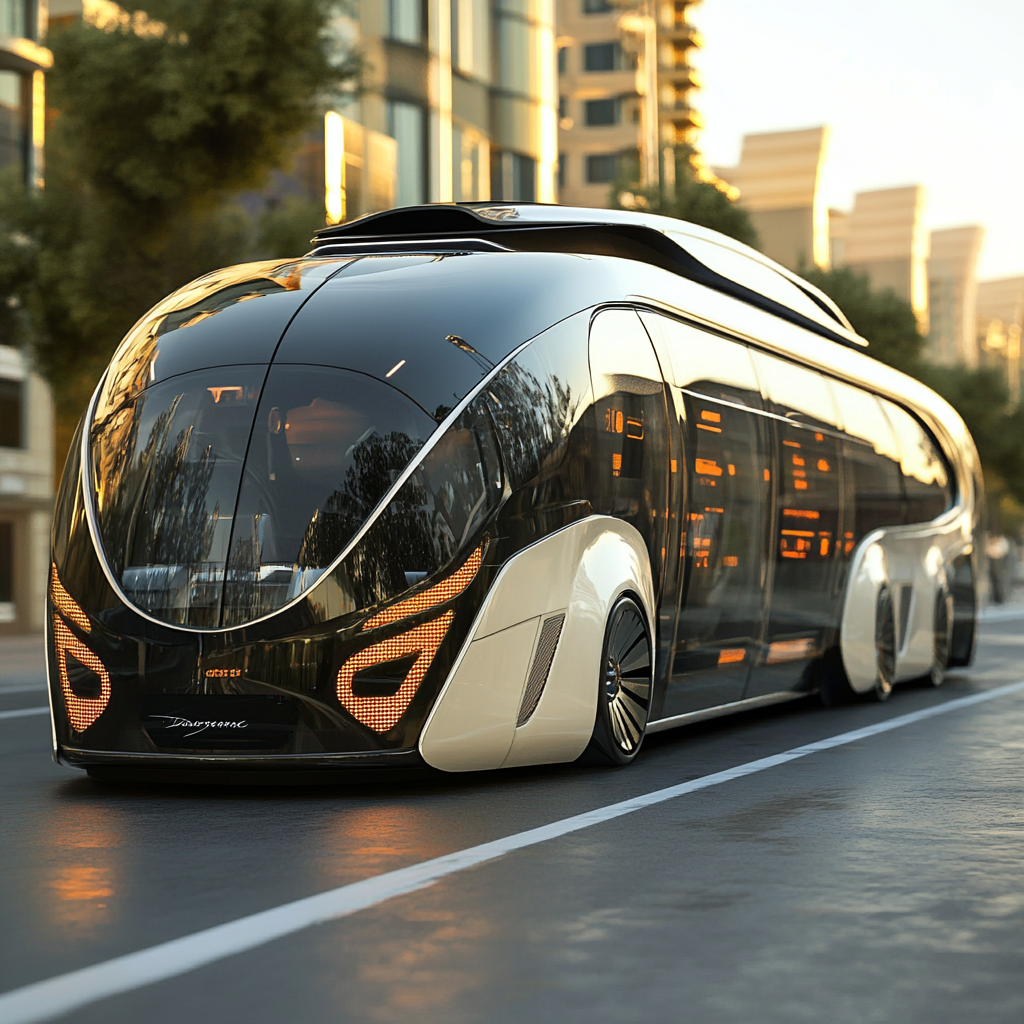Today we stand on the threshold of a new era in which form is determined not just by aesthetics, but by a whole complex of factors:environmental requirements, technological possibilities, the philosophy of minimalism and even cultural shifts in the perception of transportWhat was once just a machine now becomesan extension of the personality, a carrier of digital solutions and even a space for rest and workThe outlines of cars of the future are changing not because designers wanted it that way, but because the approach to movement itself, its meaning and purposes, have changed.
.
Changes in the perception of the appearance of vehicles
Modern cars becomesmoother, stricter and more laconic. These changes are directly related to the new philosophy: it is important not only to attract attention, but alsofit into space, to be part of the urban ecosystem. The move away from aggressive lines and excessive decorative elements indicates a growing interest infunctional beautyThis means that the design should not only carry a visual load, but also be convenient, practical, and environmentally sound.
Usersincreasingly make a choice in favor ofelectric vehicles with a minimalist silhouette, without unnecessary curves and pretentious details. Such forms are not only easier for the eye to perceive, but also emphasize technology, ecology and modernity. It isSimplicity becomes the new luxury, and “high cost” is now expressed in clean lines, quality materials and well-thought-out aerodynamics.
The Impact of New Technologies on Car Body Shapes
Development of technology directly shapes the appearance of cars of the future. New materials, digital platforms and assembly methods give designers and engineers the opportunity to go beyond the usual. Electric motors are more compact than internal combustion engines, which means there is no need to build huge hoods – this allows you to redistribute the proportions of the body.
The most significant technological factors influencing the body shape:
- Electrification— the disappearance of massive radiators and exhaust pipes allows the body to be made smooth and integral.
- Autonomy— sensors and cameras requireoptimal placement, which means that the body is designed to suit their configuration.
- New composite materials– allow you to reduce weight andform non-standard bends, which are impossible using traditional metal.
- Digitization of the salon– elimination of the classic instrument panel and use of projection displaysaffect the shape of the front panel and windshield.
- Support for network interaction(V2X) – involves the installationexternal screens and light panels, forming new visual elements of the body.
Thus, innovation dictates form, and not the other way around. And this is becoming the norm.
Tomorrow’s priorities: comfort, aerodynamics, minimalism
Future cars— it is no longer just transport, but a space for livingThat is why three key priorities shape the design:comfort, aerodynamics and minimalism. A spacious interior, free from control overload, becomes more important than a fancy exterior. Thanks to platforms with a flat floor and a large distance between the axles, the cars turn intocomfortable capsules, and the streamlined body shape reduces air resistance and improves energy efficiency.
These tendencies are becoming not just a trend, but a necessity. The person of the future does not need a “wow” effect from design – he needscomfort, simplicity and safety. Minimalism is not about poverty, and about focusing on the main thing. The absence of “extra” outside and inside symbolizesawareness of choice and respect for the space aroundSuch cars are less irritating to the eye, do not require getting used to and immediately become an extension of the owner’s personality.
Hybrid concepts and bold forms look into the future
Manyautomakerand have already presented concept cars in whichthe boundaries between classes are erased. These include crossovers that transform into self-driving vans, minivans that transform into mobile offices, and even coupes that are closer in functionality to residential modules. Such hybrid solutions are becomingpart of the new mobile philosophy– movement as a part of life, not an obligation.
The shapes of such cars are sometimes shocking – they can beflat, geometrically abstract or even capsule-like. But there is a reason behind this.search for new standards of aesthetics, where functionality, combined with visual expressiveness, is not the rule. The world is ready to make bold decisions – and this opens the door forcompletely new forms, previously unthinkable in the automotive industry.
The idea of a car as an extension of the personality
The car is increasingly perceived ascontinuation of the inner world of man. Interiors are becomingmore “smart” and intuitive, and the exteriors aremoody, with the ability to change color, light panels and interact with other road users. We are moving towards the fact thatthe car’s appearance will be customized like a background on a phone or a profile on a social network— to suit your mood and lifestyle.
This approach changes the design principles themselves. Instead of mass solutions –customized forms, which can adapt to the owner, his habits and even emotions. The car of the future is not just a means of transport, buta synthesis of comfort, design and self-expressionIt will speak for a person in the same way as clothes, gadgets or music in headphones speak today.
The shapes of cars of the future are not just new curves and lines, they area reflection of the enormous changes in the culture of movement and interaction with technology. We are moving away from an era where a car’s appearance was dictated by sleek aggression or established templates of “masculine” and “feminine” design. Instead, it is timethoughtful, logical and conscious aesthetics, where every decision makes sense – whether for the sake of reducing drag, ease of entry or an intuitive interface.
Cars are becomingcloser to a person, and that is why they graduallylose their “face mask” and gain their true personality. It is no longer just a means – it is a companion. Forms are smoothed out, meanings are deepened, boundaries disappear. And when we look back in a few years, today’s solutions will seem as archaic to us as cars from the middle of the last century look today. Evolution is underway.not on the path of complication, and along the wayinner harmony and outer clarity. And that is exactly it –the main form of the future.
Minimalism will not replace, but will rework the sports aesthetic, adding functionality and calmness to it. It will becomenot a challenge, but an expressive accentwithin the overall balance.
No, technology allows us to create even more emotional andinteractive forms, where is the appearance of the carreflects the personality of the ownerand adapts to his mood.

